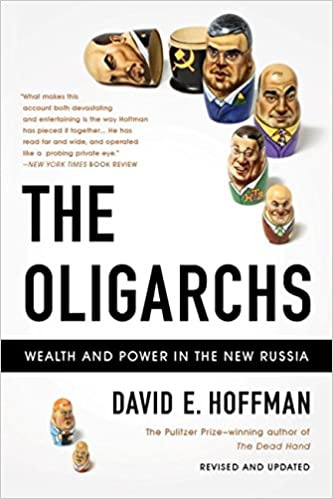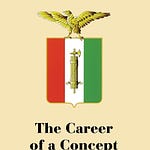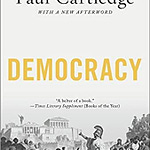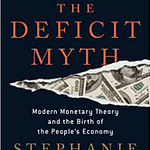Welcome to Citizen Scholar! Since launching five months ago we’re reaching hundreds of people a week, so we thank you for your support. If you enjoy our writing on civic virtue and individual excellence, we humbly ask you to share Citizen Scholar with your family members and friends who may enjoy it. The contents of the audio and text formats are identical and meant to accommodate your preferences. Please let us know if you have any feedback - we’re always looking for ways to improve!
Introduction
We’re dedicated to continuing the mini-series of memoirs we began last week with Red Notice. However, we couldn’t resist a temporary digression to go down the rabbit-hole of studying modern Russia. In The Oligarchs, David Hoffman produced a comprehensive history of one of the most important periods for understanding Russia in 2022.
Hoffman tells the story of the Soviet Union’s collapse by 1991 and Russia’s transformation into a system of oligarchic capitalism. The critical period in which this occurred lasts from the accession of Mikail Gorbachev to leadership of the Communist Party in 1985 until Boris Yeltsin handed over his position as President to Vladimir Putin on December 31, 1999. Hoffman served as The Washington Post’s Moscow bureau chief from 1995 to 2001 and initially published the book in 2001. While the 2011 edition that we read adds some commentary on Vladimir Putin, the whole book benefits from being written by someone close to the events of the time and has less of a shadow cast over it by the prevailing anti-Russian sentiment caused by the 2014 invasion of Ukraine.
Late Soviet Circumstances
We were jolted by some of the things we learned in the book. Admittedly, we weren’t terribly surprised by the stories of organized criminals extorting protection money, oligarchs establishing thousand-man private security forces and government officials falling out of windows after state monetary reserves went missing. These fit the flawed and incomplete narrative that most Americans associate with today’s Russia. We tend to tell an oversimplified story of communism collapsing under its own deficiencies and crooks opportunistically using the anarchy to take over. A more interesting story with much to teach us takes shape when we examine the details of events and especially of the key personalities involved; Hoffman serves as an excellent guide toward this end in The Oligarchs.
The first critical fact to understand – and one we often forget these days – is the ugliness of daily life in Soviet Russia in the last few decades before its ultimate demise in 1991. While the mass purges and starvations of Stalinist times were largely gone, pervasive political repression and material deprivation were not. Even in the 1980’s, individuals knew that dissent was not tolerated and that the contents of a private conversation could be overheard by or reported to the KGB.
In addition to strict suppression of heterodox views, the authorities tried to achieve a worker’s paradise by controlling all production centrally from Moscow, mainly via the State Planning Committee (Gosplan). For a number of reasons, most of them tied to misaligned incentives, the result was constant shortages of food and other critical goods. The few available groceries were of terrible quality, and commodities like meat were frequently unavailable for months at a time, even in large cities. Some Russians – especially well-educated or urban Russians – were not ignorant of the fact that they were living worse lives than citizens of western democracies. Smuggled copies of Western movies, with images of full refrigerators and open dissent, were widely consumed and admired. However, people usually could not legally buy their families better food or clothes, even if they wanted to or could afford to. Private enterprise was illegal; Russian citizens got what the state could give them.
As a result, many people found extralegal means to get what they wanted or needed. To acquire basic consumer goods or essential medical services in a timely manner, Russians had to cultivate personal connections or exchange bribes and favors. Black market providers also sprung up and risked significant punishment to satisfy market demand. The cliché that by the time the Soviet Union fell, there were no more communists living in it, was largely but not completely true.
“Like Saturn, the Revolution Devours its Children”
As in China today, ambitious Russians had to join the Communist Party apparatus to move up in the world. Inevitably however, the unified façade that the Party showed the world masked internal rivalry between numerous factions amongst the elite. Some were more “conservative” or “reactionary” in that they wanted to preserve hardcore communism, while others were interested in reforms that allowed more democratic participation or market-based economic policies. When Gorbachev’s Perestroika policy allowed limited economic liberalization, these radical democrats became natural allies of the new entrepreneurial class.
The dynamics of this new economic environment played a key role in the formation of the oligarch class. Entrepreneurship was more decriminalized than legalized – many necessary business processes, like paying worker wages or sourcing raw materials, were still either impossible or effectively illegal. Former black-market smugglers and traffickers who were already familiar with skirting these restrictions made the transition into the new permitted cooperative businesses. New market entrants of this time, like the four key oligarch businessmen highlighted by Hoffman, had to make their peace both with the criminal underworld and especially with [persuadable] government officials. The two key government officials who they allied with and who were highlighted in this book were Yury Luzhkov, the long-serving mayor of Moscow, and Anatoly Chubais, a radical economist who held various high offices during the 1990’s and played the most important role in crafting / implementing Yeltsin’s economic policies.
“Radical” Communist officials who favored market-based and democratic reforms effectively oversaw a revolution between 1989 and 1991. We don’t think this is emphasized enough. Yes, communism collapsed because Warsaw Bloc countries and peripheral Soviet Republics broke away, but the internal Moscow revolution was just as important. The revolution was effectively won when the 1991 reactionary coup orchestrated by elements of the military and KGB tried to overthrow Gorbachev. According to Hoffman, when Luzhkov and his coterie picked Gorbachev and Yeltsin over the coup plotters, it made the pivotal difference between the coup’s success or failure.
With the Machiavellian reformer Yeltsin firmly ensconced in power, a new era began for Russians and for the nascent oligarchs. Luzkhov was allowed to incubate Moscow businesses under his patronage, and the morally questionable form of capitalism he sponsored would spread across Russia from Moscow. Yeltsin also gave Chubais and his collaborators significant latitude to control economic policy for most of his tenure.
“But Gaidar and Chubais believed that gradualism was akin to death; it would strengthen the vested interests and doom any real chance at reform. Chubais said it was only an illusion that change could be done “gently, slowly, painlessly, so that everybody could be happy.” Gaidar and Chubais had no intention to be gentle, slow or painless. Later they would be criticized over and over again by those who said there was another way – if only they had taken more time, if only they had been more careful, if only they had rebuilt industry case by case, if only they had taken care to build institutions first. Many of these arguments were correct in a theoretical sense but were far removed from the real world that Gaidar and Chubais confronted.”
Chubais, a “radical” economist at the time, wanted to allow free floating prices and free competition to sort out the imbalances of the system. However, the new Russia had very weak rule of law. When courts and bureaucrats could not be trusted to fairly oversee the rules of the game, strong handed tactics could be used to take advantage of enterprises and of workers. Resourceful men had to navigate the chaos to build their businesses. Alexander Smolensky went from running a small construction cooperative to becoming the most prominent private banker in Russia. Mikhail Khodorkovsky, trained as a chemical engineer, was initially importing PC’s but would eventually become Russia’s richest man by getting a hold of state-owned oil assets. Vladimir Guzinsky left his small rackets early to get a hold of a state-owned tv channel and formed NTV – the first independent and influential news channel in Russia. Boris Berezovsky, another engineer, worked his way up from selling software to owning energy assets and starting an even more popular state-owned channel-turned private news channel, ORT. Many firms were privatized with the cooperation of corrupt officials, and new owners frequently got away with speculating on the company’s account while workers went unpaid. Goods that had been free or highly subsidized became very expensive; high inflation punished ordinary Russians severely. The First Chechen War broke out in late 1994 and was both chaotic and highly demoralizing.
Under these circumstances of mixed progress and suffering that many voters experienced, Yeltsin’s reelection prospects looked poor ahead of the 1996 election. Hoffman alleges that Chubais felt the need to compromise some of his free market values in order to keep the leading contender, Communist Party leader Gennady Zyuganov, from winning the election and undoing all of his progress. Easy money policies tried to reduce perceived pain amongst citizens in Russia but continued to exacerbate inflation and risky speculation. More significantly, Hoffman tells us that the privatizations of huge former state-owned enterprises (SOE’s) were heavily influenced by electoral needs. He strongly implies that the companies were sold off at buyer-friendly terms to a few politically favored oligarchs in order to secure their support for the election. The low valuations may not have been accidental or due to ignorance of modern corporate finance, as Bill Browder implied in Red Notice. This exacerbated political outrage about high inequality, but the resulting support from oligarchs allowed Yeltsin to win reelection. Boris Berezovsky and Vladimir Guzinsky threw their popular television news channels’ support behind Yeltsin, and many other oligarchs contributed money and their most talented personnel to the re-election campaign. In exchange, the oligarchs went from resourceful entrepreneurs and speculators operating in questionable circumstances to owning the commanding heights of the economy: the auto industry, the energy industry, factories, banking and the news media, among others.
This alliance of big capital and government peaked in the mid 1990’s and popularized the idea that Russia was governed by an oligarchy. It would be weakened significantly by infighting amongst oligarchs in the later 1990’s, as well as by the 1998 currency and sovereign default crisis. Ordinary Russians would, of course, suffer more due to these economic troubles and returning conflict in Chechnya. By 1999, Boris Yeltsin was in poor health and demoralized. He turned to his deputy, Vladimir Putin, to take over. The former head of the FSB (the successor to the KGB), was supposed to have been a placeholder. Instead, he was thrust into the Presidency after Yeltsin resigned on December 31st, 1999. Putin had become popular enough to get this deputy position in the first place thanks to the patronage of Berezovksy and his ORT TV channel. In power, Putin had a different approach to the world. He had the mindset of a security professional, not necessarily that of a capitalist. Putin implicitly advised oligarchs to stay out of Kremlin affairs if they wanted to hold on to their assets. Within a few years of his ascent to power, Berezovsky, Khodorkovsky and Gusinsky had all been purged. Smolensky withdrew into obscurity.
Reflections
Others may have made the comparison without us noticing, but Russia’s history from 1985 to today resembles the French Revolution in some interesting ways. The Reformers’ seizure of the machinery of a sclerotic and delegitimized Russian government as the Soviet Union collapsed reminds us of the uprising of the Third Estate at the Estates General in 1789, even if it was done behind the scenes. As happened in France, the rising radicals found that governing the country with many competing interests, economic troubles and nearby wars was extremely difficult. Eventually, the chaos would be soothed by the imposition of a man of the security / military apparatus. We recognize this comparison is indulgent, but we find it to be telling nevertheless.
Once Putin was in power, he seized control of the influential television channels from oligarchs, and his popularity amongst Russian voters has remained high ever since. He also purged many of the old leading oligarchs and created a new crop of his own. They are colloquially referred to as the siloviki, or the men of the security forces. Whereas in the late 1980’s and 1990’s, black market hustlers entered a vacuum of law and imposed their own rules on the new economy, the corporate boards of today’s Russian behemoths (once SOE’s) are full of siloviki. These men came of age in the organs of Soviet authority that were the most reactionary and hostile to the rise of democratic capitalist reformers. Today, they lend some credence to Western snickering that Russia is still run by the KGB.
Perhaps the flavor of oligarch makes less difference to ordinary Russians than the bigger social, economic and institutional problems that Russia suffers under. The fundamental issue in the lack of a durable rule of law doesn’t appear to have been solved in Russia. The six key figures profiled in The Oligarchs and mentioned above mostly started out as relatable or even sympathetic figures – far away from resembling organized criminals that the popular mind sometimes portrays them as. Chumais was an ethical economist who aspired to a free and democratic Russia. Gusinsky failed to achieve his dream of becoming a theater director and fought persistent anti-semitism before he tried his hand at business. Khodorkovsky and Berezovsky were engineers with academic orientations. Smolensky was a black-market hustler who was sentenced to two years of hard labor in the 1980’s for printing and distributing Bibles.
In response to the lack of a durable rule of law, they gradually began to act in increasingly coarse or even corrupt ways. Chumais gave away his country’s wealth to a few individuals to stop the return of communism. Gusinsky felt so terrible about having to bribe officials that he got into the media business to influence them in more constructive ways, only to have his media business appropriated by the state. All of them engaged in underhanded tactics and fierce competition to avoid being swallowed up by a bigger fish in an arena without reliable rule of law. These epic examples of how tough circumstances can corrode well-intentioned and competent characters would make for a compelling television show. We’re glad to have cleared up this cloudy area of historical understanding about Russia in our own minds by reading The Oligarchs. It has also put rule of law back in our minds as the priority focus for how Russia can have a better future.
All the best,
The Citizen Scholar Team
If you made it this far & enjoyed the post, could you please let us know by giving the heart button below a tap? Thank you!















Discussion #28: The Oligarchs: Wealth and Power in the New Russia, by David E. Hoffman